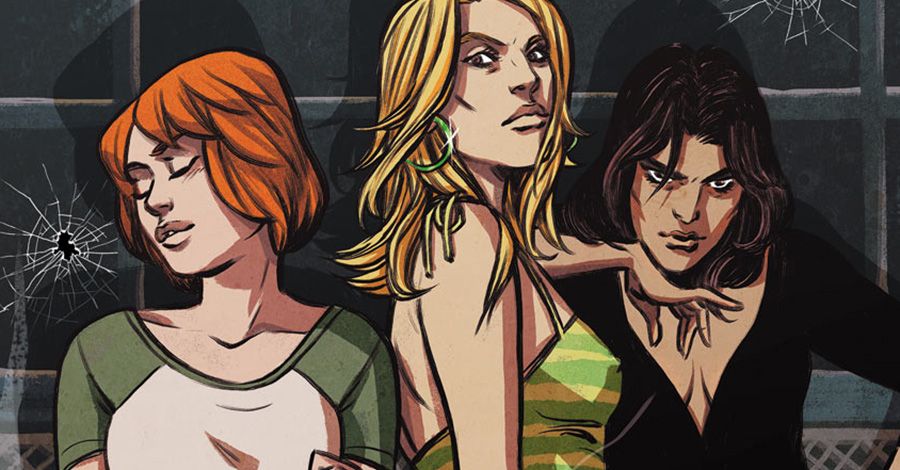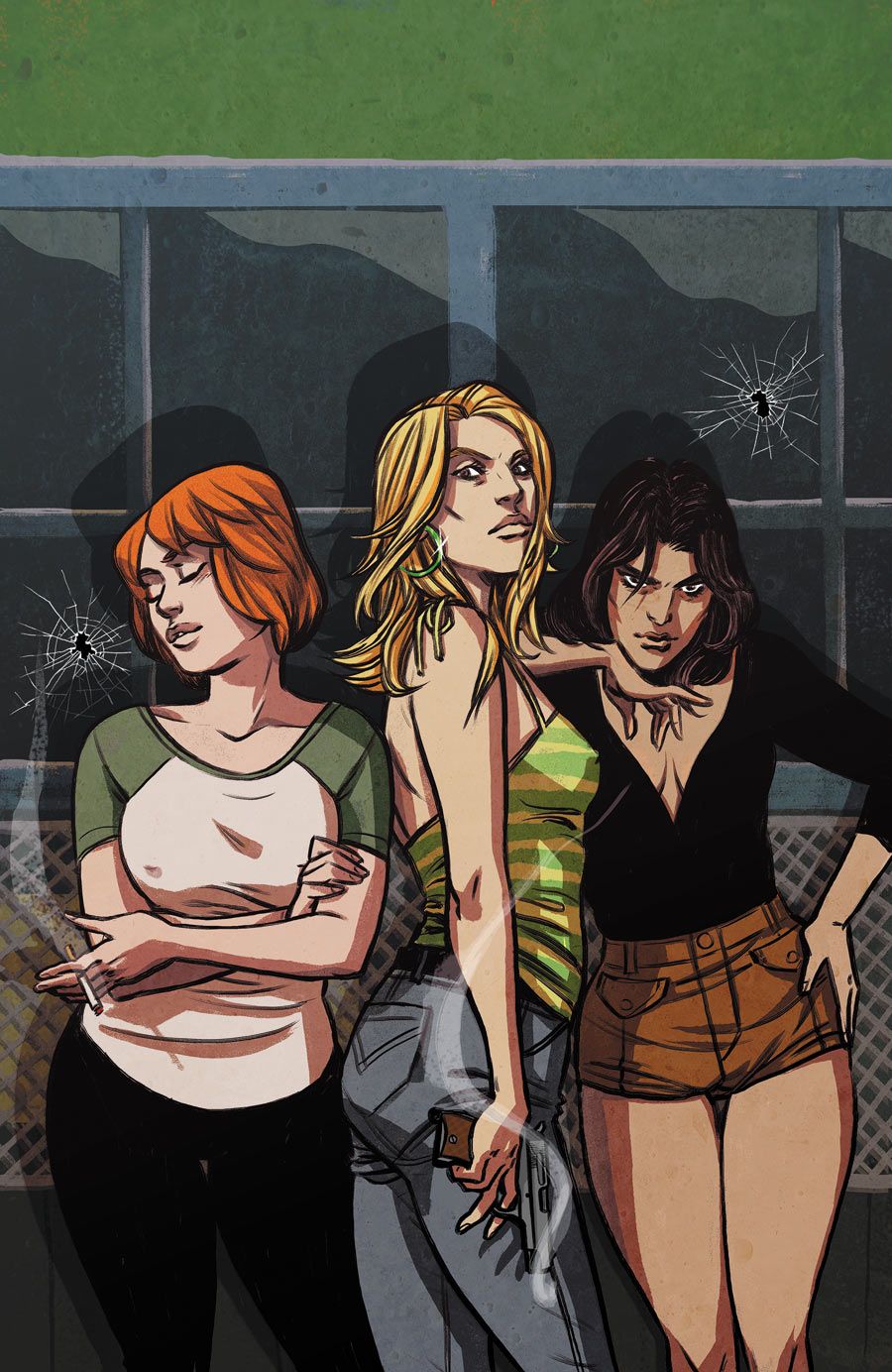Ollie Masters originally pitched "The Kitchen" to Vertigo Comics editor Will Dennis as "Goodfellas" meets "Mob Wives." As readers learned following the release of "The Kitchen" #1, he nailed it as the new series features elements of both fictionalized and factual Mafioso -- and he even threw in the kitchen sink.
RELATED: Masters and Doyle Welcome Readers Into Vertigo's "The Kitchen"
Illustrated by Ming Doyle and featuring covers by Becky Cloonan, the eight-issue miniseries, set in 1970s New York City, follows the lives of three women that are each married to a member of the mafia in the mob-run Hell's Kitchen. When their husbands are collectively sent to prison, the wives step up and take over the family business. And as one would expect with that kind of power shift comes heavy amount of power struggle. And drama -- lots and lots of drama.
CBR News spoke with Masters to discuss the opening salvo of "The Kitchen" and we learned that even though he has only visited Manhattan once in his early teens, he has really done his homework, with a great understanding for this fictionalized version of the oft-portrayed gritty, New York neighborhood.
Masters revealed how he and Doyle arrived at the visual interpretation of 1970s Hell's Kitchen, including which movies the creative team watched as reference points. Not unlike the infamous triumvirate of Shakespeare's "Julius Caesar," Masters also teased the highly dramatic interplay between the three main mob wives and we learned that Kath, Raven and Angie are primed for taking on mob boss Tony Castellano and more importantly, their own husbands, who are about to be released from prison.
CBR News: Out-of-this-world adventures, time traveling tales set in the far, far past and the oh-so distant future, even post-apocalyptic events caused by war, disease or zombie infestation -- Ollie, is any place scarier than Hell's Kitchen in the 1970s?
Ollie Masters: [Laughs] It could be a pretty scary place at times but I'm not sure if it was worse than an apocalyptic zombie infestation.
What level of familiarity do you have with Manhattan?
I've only been to Manhattan once, when I was about 13, but I feel like I've become pretty familiar since writing this comic.
Did you go back and watch any classic movies set in New York in the 1970s while researching this project, like "The French Connection" or "Taxi Driver"?
Oh sure, they're both great films. I also went back to other seventies' films like "Mean Streets," "Serpico," "The Conversation" and "Annie Hall." It was a great period in cinema.
You've also shared a lot of reference photos back and forth with Ming Doyle. Are there any particular images stand out that really set the tone and spirit of "The Kitchen"?
Yeah, we've shared loads of reference photos. Partly so we can make sure everything's accurate to the time period but also so we can get a feel for the atmosphere of the era. The ones that always stood out for me were the street photos of New York City at night. It just seemed from the photos that New York City was its most exciting, dangerous and interesting at night. A place where it all happened on the streets and you never knew who you'd meet.
For readers that have yet to pick up "The Kitchen" #1, what's the general concept of the series?
The issue starts with Jimmy, Johnny and Rob, the three toughest Irish gangsters in Hell's Kitchen, getting put away for assault. This leaves a gap in organized crime in Hell's Kitchen.
But that gap, it appears, will be filled by their three wives. Let's start with Kath, who actually really intimidates me. What makes her tick?
Kath feels like she's got a lot to prove. She expects to get the same respect her husband gets on the streets but she hasn't earned it like he has. She puts up this front of being cool and in charge but it's when her confidence is knocked, when she's got her back against the wall, that's when we see who she really is.
What about Raven? Does she have more skills than making soda bread and potato soup?
Damn right, she has more skills. [Laughs] She's the smartest out of all of them and she soon finds out she may be more suited to the gangster lifestyle than she originally thought.
Finally, what about Angie? She seems very much out of her element.
At first she's just kind of in the shadow of Kath and Raven. Because they're such big personalities, it's easy for her to just slip into the background. But there's something building in her and when she unleashes it on the world, you'll see how badass she really is.
I love the story about the shoes. It's so gangster. Where did it come from?
It's something I completely made up but I can imagine a real gangster doing it. You have these people who run their lives with violence. They don't know any other way to deal with their problems. So they end up beating the shit out of people for small things like making fun of their shoes.
I'm not sure what you can share, but there is a defining moment in the closing pages of "The Kitchen" #1, which really sets things in motion. Was the event always going to be the trigger for the series, so to speak?
I'd rather not go into detail but yeah, that was always going to be a trigger -- the moment that forces them into their life of crime.
Should we be afraid of Tony Castellano?
It depends if you've done anything to piss him off or not.
"The Kitchen" #1, by Ollie Masters and featuring art by Ming Doyle, is available now.


